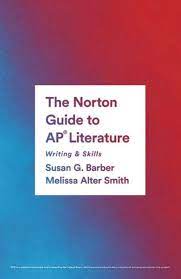Teaching tone is a difficult thing, especially to high schoolers. Since it is such a challenge, it doesn’t get its due diligence but it is one of the most important literacy skills a reader needs to possess.
Here are some common problems I have run into in my classroom when teaching tone:
- They don’t know what it means.
- They know the definition but they don’t know how to apply it to a text.
- They think it means the author’s attitude, they don’t understand it reflects the speaker or narrator.
- They confuse tone with mood.
- They can recognize it on a basic, glaring level, like when a speaker is sad or angry.
- They see tone as one consistent attitude, but they struggle to see how it changes or shifts.
It is not hard to understand why this is a struggle. Nowadays, it feels like we all exist in attention-grabbing worlds of our own curation. We crop photos on Instagram, add filters to SnapChat, and reduce thoughts and emotions to 140 characters on Twitter. We are the centers of our own universe. To understand tone, we need to step outside our own minds and adopt an empathetic framework . That is hard enough for adults, let alone adolescents. Teaching tone is about creating a mind shift by encouraging readers to be perceptive to the clues and signals that indicate someone’s attitude toward a subject.
That isn’t easy.
A Working Definition of Tone
Perrine’s Sound and Sense: An Introduction to Poetry defines tone as “the writer’s or speaker’s attitude toward his subject, his audience, or himself. It is the emotional coloring, or the emotional meaning, of the work and is an extremely important part of the full meaning.”
Yet, the remainder of the chapter’s explanation of tone is devoted to recognizing it in spoken language. Sure, the skill is analogous, but inflections of voice are easier to recognize than inflections in word choice. Just ask anyone who has had an email or text misinterpreted based on tone.
Teaching Tone
So how do you get your students to recognize it in a text?
Tone is a foundational skill of literary and rhetorical analysis. It enables students to recognize the subtle ways in which writers express the thoughts and feelings of a speaker, narrator, or character. When a student successfully and accurately comprehends tone, they are perceptive to the way in which word choice (diction) and sentence structure (syntax) influence a speaker’s attitude. And once they recognize tone, they can understand how it impacts other elements like characterization, conflict, and theme.
Teaching tone need not be complex. I’m sharing my three commandments that I use to guide students to be adept at recognizing tone in a text and see its significance.
1. Forward Design/Backward Design
All pieces of literature have a tone of some sort. Authors create tone through two primary literary elements, diction and syntax, yet it is also enhanced by details, imagery, and figurative language.
I have my students circle the words in a passage that they feel are important–the words that seem to reflect what the speaker is feeling or thinking. Then I ask them to characterize the syntax. Finally, we look at the simplified tone sheet (you can get a free copy below) and see which words correspond to the evidence that was gathered.
[optin-monster-inline slug=”ecz27a7lx9wwlvq3uxpa”]
You can get a lot fancier and have students create color charts or illustrations and images, but I have found the simple repetitive practice of observing the diction and details, characterizing the syntax, and drawing conclusions about tone ingrains the habit. My students and I do this with nearly every poem that we study.
Eventually, when the practice becomes habit, we switch from forward development of tone–moving from evidence to conclusion)– to backward design. In backwards design, students identify the tone first, and then look for the evidence in the text to support it. This shift occurs later in the year once students have the close-reading proficiency to intuitively recognize tone because they can synthesize the evidence automatically.
2. Use a List for Reference, Not Memorization
I know the logic–if you want students to master something, you have them memorize and study it in a comprehensive way. But I have found that practicing the skill is more valuable that studying and memorizing it. In the past I had students memorize a list of 50-60 tone words, and sometimes I would even quiz them on it.
I didn’t find it to be an effective practice.
My students memorized words for the sake of memorization. They did it for the assessment at hand but it did little to expand their vocabulary or develop its application in context.
Using the list for reference is a more organic approach to tone development. There are only 35 words on the list, many of which are already familiar to them. They are a few that may be new, but these are words they are likely to have heard before, and there are not enough to be overwhelming.
Using the list as a reference, and with repetitive practice, students will develop the skill with greater fluency than memorizing a set of words and being quizzed on them.
3. It is All About the Shifts
Helen Vendler provides a checklist for exploring poems in Poems, Poets, Poetry: An Introduction and Anthology. She encourages readers to observe a poem’s skeleton and consider “the emotional curve on which the whole poem is strung,” recognizing “the pieces of the emotional curve — the changes in tone in the speaker’s voice as the poem goes along.”
Whether it be prose or poetry, entire works and even close-reading passages rarely strike one note. Tone changes. Recognizing these subtleties of difference and observing how a speaker’s attitude changes, show a complex understanding of a text.
When we are looking at tone in my class, I always ask, “Where does it shift? Where do you see a change?” We do this with prose and poetry. A great passage to do this with is the Cardinal Wolsey soliloquy from Henry VIII on the 2009 AP exam. If students can recognize the causes in shift, they are can see the complexities of context, character, and situation.
When teaching tone, remember that:
- Repetitive practice builds skill.
- List are useful as references but not for memorization.
- And shifts matter.
[optin-monster-inline slug=”ecz27a7lx9wwlvq3uxpa”]














4 comments
Peter
Great stuff. Thanks for sharing. Where might I find the simplified tone sheet?
Clicton
Hey! Love this post. However, I don’t think you posted a copy of your simplified tone sheet though (unless I’m dense and can’t find it!) It would be great to have. -Clifton
Brian Sztabnik
It is at the end of the post.
Stephanie
Did you find it? I don’t see it either.